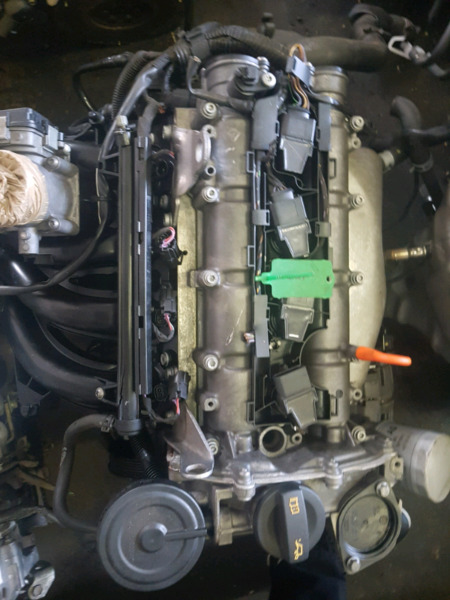Lower maintenance costs with a well-built clp engine.
Lower maintenance costs with a well-built clp engine.
Blog Article
How a Clp Engine Can Improve Effectiveness in Numerous Industries
The development of CLP engines marks a substantial shift in operational effectiveness across different fields, driven by their capability to optimize gas intake and minimize downtime. As companies progressively focus on sustainability along with efficiency, the role of CLP engines becomes even more important.
Overview of CLP Engines
CLP engines, or Continuous Liquid Propellant engines, represent a considerable development in propulsion innovation, specifically for area applications. These engines use a constant feed system that permits the continual expulsion of propellant, bring about improved effectiveness and performance compared to conventional strong or hybrid propulsion systems. By keeping a continuous flow of fluid propellant, CLP engines can achieve more accurate drive control, which is critical for steering spacecraft in various goal scenarios.
The style of CLP engines incorporates advanced materials and innovative fuel management systems. clp engine. This leads to decreased weight and boosted reliability, necessary elements for long-duration space missions. Additionally, the constant procedure reduces the risk of burning instability, an usual difficulty in traditional rocket engines.

Advantages in Manufacturing
The production of Constant Fluid Propellant (CLP) engines offers several significant benefits that enhance both effectiveness and cost-effectiveness. One of the key benefits is the structured production process, which reduces the intricacy linked with conventional propulsion systems. By using fluid propellant, makers can accomplish greater precision in engine performance, resulting in enhanced energy outcome and reduced waste.
In addition, CLP engines help with a greater degree of modularity, enabling easier integration right into various manufacturing lines. This flexibility can substantially decrease lead times and improve general functional versatility. Making use of CLP modern technology additionally tends to minimize the need for comprehensive maintenance due to fewer moving components, which converts into decreased downtime and operational prices.

Applications in Logistics
Leveraging Continual Liquid Propellant (CLP) engines in logistics provides considerable benefits in functional effectiveness and dependability. These engines give a robust remedy for different transportation demands, making it possible for the seamless activity of goods across vast ranges. The integral layout of CLP engines enables for constant power outcome, which translates into smoother and much more foreseeable transportation timetables.
One of the vital applications of CLP engines in logistics remains in sturdy freight transportation, where they can drive both ground and aerial vehicles. Their capacity to preserve high efficiency under differing tons conditions makes certain that shipment look at these guys timelines are satisfied, thereby boosting client contentment. In addition, CLP engines can be incorporated into automated logistics systems, promoting real-time monitoring and optimizing path planning.
Additionally, the sturdiness of CLP engines decreases upkeep downtime, enabling logistics firms to optimize their functional capacities. This is specifically beneficial in warehousing procedures, where effectiveness in taking care of and moving goods is vital. As logistics remains to progress, the integration of CLP engines represents a forward-thinking method that not just boosts performance however also sustains the industry's expanding needs for dependability and rate.
Influence On Energy Performance
How do Continuous Fluid Propellant (CLP) engines enhance power performance in transportation? CLP engines use a regular circulation of fluid fuel, optimizing combustion procedures and maintaining a steady drive outcome. This layout reduces energy losses associated with conventional burning engines, where Get the facts fuel distribution can differ and result in inadequacies.
The constant operation of CLP engines permits for a much more efficient thermal cycle, resulting in higher details impulse compared to traditional engines. clp engine. This translates to lowered gas usage for the very same amount of job done, substantially lowering functional costs across numerous transport fields, consisting of air travel and maritime sectors
Moreover, the capability of CLP engines to maintain ideal performance under differing tons problems minimizes the demand for frequent velocity and slowdown, further enhancing fuel efficiency. Enhanced power performance not just contributes to set you back financial savings yet also results in reduce greenhouse gas discharges, aligning with worldwide sustainability goals.
Future Trends and Innovations
Arising developments in Continual Fluid Propellant (CLP) engine modern technology assurance to revolutionize the landscape of transport effectiveness and sustainability. As sectors pivot toward greener choices, CLP engines stand at the center, integrating innovative article source products and design approaches that boost efficiency while reducing environmental impact.
One of one of the most encouraging patterns is the fostering of crossbreed systems that integrate CLP engines with renewable power sources. This harmony can enhance gas usage and lower emissions, lining up with international sustainability goals. Innovations in computational fluid characteristics (CFD) are facilitating the design of even more aerodynamically efficient engines, leading to reduced drag and improved fuel performance.
Furthermore, the advancement of clever monitoring systems is set to boost functional effectiveness. These systems utilize information analytics and IoT innovation to enhance engine performance in real-time, making sure that the engines operate within their most efficient criteria.
As research proceeds to check out different propellant solutions-- such as biofuels and artificial gas-- the future of CLP engines looks appealing. By taking advantage of these developments, markets can not just enhance their effectiveness but additionally add significantly to a cleaner, more sustainable future in transport.
Verdict
In conclusion, CLP engines represent a considerable development in performance throughout multiple industries. The integration of sophisticated products and fewer relocating components lessens upkeep needs, while positioning with sustainability goals placements CLP engines as a pivotal modern technology for the future.
Report this page